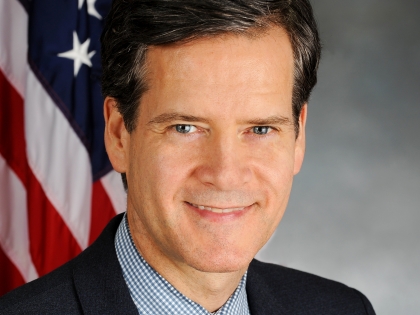
Senator Hoylman-Sigal's Testimony on Civil Aviation Noise Policy Before the FAA
September 29, 2023
Thank you for the opportunity to comment on the Federal Aviation Administration’s (FAA) civil aviation noise policy. My district covers a significant portion of Manhattan’s west side, from Christopher Street to West 103rd Street. This area contains the West 30th Street Heliport, which is one of three heliports in Manhattan. Many of New York City’s most beloved and heavily trafficked parks lie in my district, including Central Park, Hudson River Park, and Riverside Park. The proximity of prominent heliports to these places of respite and recreation has frustrated constituents for years. Indeed, New York’s heliports neighbor some of the densest urban neighborhoods in the world. The communities in my Senate District alone average almost 60,000 residents per square mile. While I am pleased that the FAA is reevaluating its understanding of noise impacts, I hope the resulting methodologies can capture human needs beyond those that are directly reflected in epidemiological data, including the importance of culture, greenspace, and forums for socializing.
In December 2022, my office released a report detailing the nuisance of “choppers” in the 47th Senate District. As I documented, complaints about helicopter noise have risen 678% between 2019 and 2021. Data reveals that on an average weekend, 165.8 helicopters fly over Manhattan, with over 20 helicopters alone flying over Central Park. Unlike other parks, Central Park doubles as a site for world-class theater, art, and music—all of which are disrupted by aircraft noise. The racket of choppers is even worse on the west side of Manhattan, which serves as a key route for the majority of helicopter trips in the borough. These aircrafts disturb Hudson River Park (HRP), one of the most popular green spaces in the city. HRP receives over 17 million visitors a year—more than double that of other international sites, such as the Louvre or the Eiffel Tower. With these facts in mind, I’ve introduced legislation to prohibit heliports within Hudson River Park.
Any change to FAA decision-making noise metrics should account not only for “annoyance” and epidemiological effects (which are no doubt great)--but also for less precise yet equally damaging harms. Shakespeare in the Park revives great works of theater through free performances in Central Park. The Hudson River Greenway remains the most used bike path in the city and a key piece of transportation infrastructure. Riverside Park plays host to casual picnics, morning jogs, and first dates. When helicopters take off from New Jersey and West 30th Street, traversing the river and Manhattan’s neighborhoods, their noise stymies New Yorkers’ access to culture, recreation, and social interaction. The roar of chopper blades deter residents from enjoying the public spaces and artistic programming that our city and state spend billions annually to preserve. While these activities might not always be reflected in metrics of “annoyance” or health outcomes, they are certainly essential for a fulfilling life and a flourishing city. I urge you to ensure this damage can be captured in future FAA noise metrics, noise impact thresholds, and land use compatibility standards.
I appreciate the opportunity to comment, and I look forward to following the next steps of the Noise Policy Review.